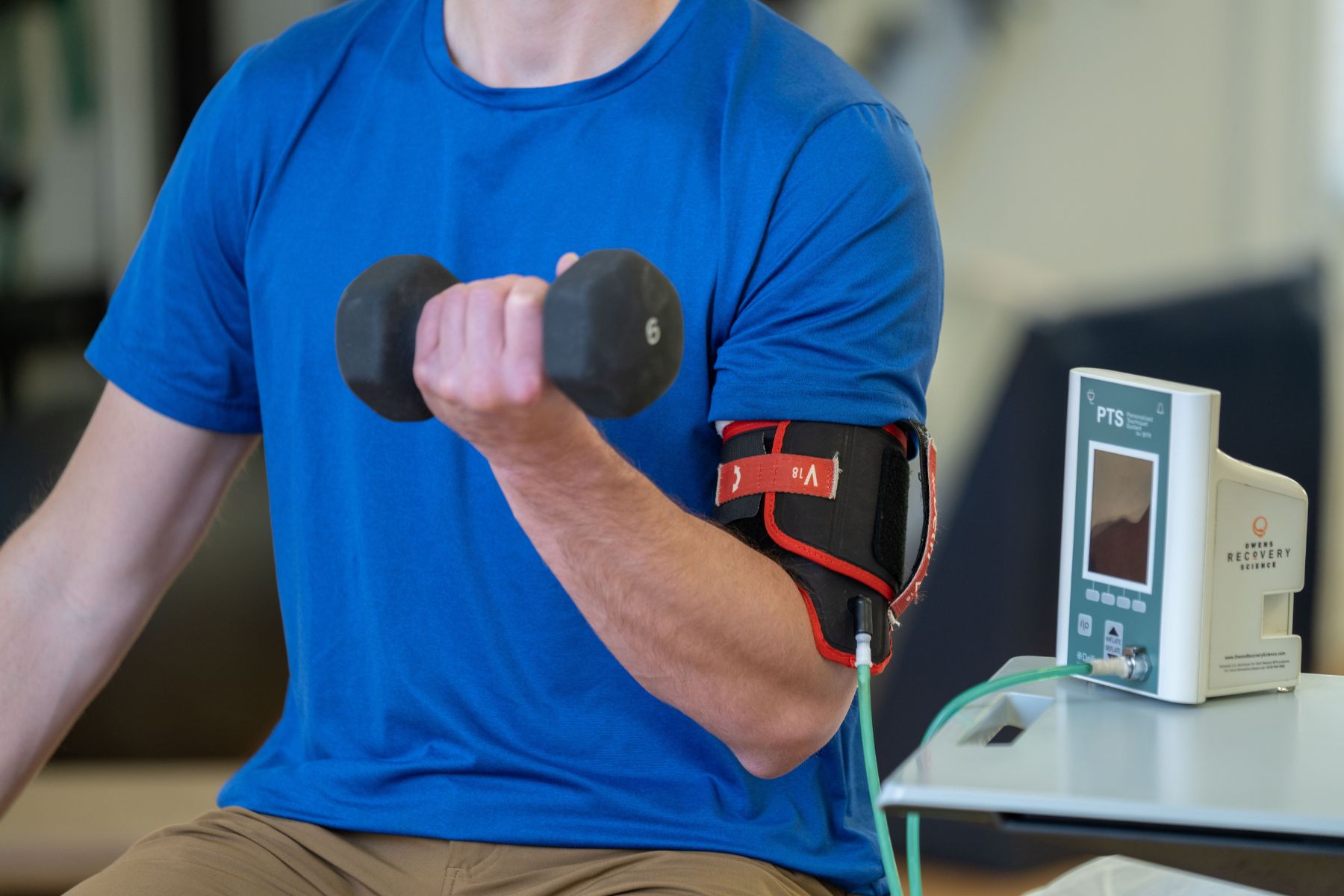The benefits of blood flow restriction therapy
Blood flow restriction (BFR) training is a modality that helps accelerate the rehab process, and to reduce risk of future injuries. BFR has been shown to have many local and systemic effects throughout the body, including positive effects on both muscles and bones.

What is Blood Flow Restriction Training?
Blood flow restriction (BFR) training is a modality that we use at Performance to help accelerate the rehab process, and to reduce risk of future injuries. BFR involves using a medical grade tourniquet, around the arm or the leg, and then performing exercises with the cuff temporarily occluding blood flow to the limb. With BFR, we can do exercises with as little as 20% of your 1 repetition max, while getting the same effects as doing a much higher weight or resistance. This is especially helpful in our patients who are recovering from surgery, allowing us to build strength while still allowing the surgical site to adequately heal. While this may sound intimidating, BFR is well studied in physical therapy research, and the devices we use ensure that it is performed safely.
How does it work?
BFR works by limiting arterial blood flow and stopping venous return to the limb while performing a specific exercise. This then forces the muscles to work in an anaerobic (oxygen deficient) environment, making low load exercises feel extremely difficult.
What are the effects of BFR?
BFR has been shown to have many local and systemic effects throughout the body. At the muscular level, there are improvements in muscle protein synthesis, muscle fiber recruitment, muscular hypertrophy, and muscular endurance. This not only applies to muscles below the level of the cuff, but also above AND on the opposite side of the cuff.
BFR also induces hormonal changes in the body which help with muscular adaptation. Multiple studies have shown an increase in free testosterone and serum growth hormone, both of which help to promote growth of muscle tissue in the body. BFR can also be an effective method for improving bone density in those who may not be able to tolerate higher intensity, weight-bearing exercise.
What conditions do we use BFR for?
BFR can be used for many conditions, most commonly we use it for:
- Post-surgery (ACL reconstruction, meniscus repair, shoulder labral/SLAP repairs, achilles tendon repairs, etc.)
- BFR allows for effective strengthening exercise without placing too much mechanical stress on repaired tissue
- Tendinitis (patellar tendinitis, golfer/tennis elbow, achilles tendinitis)
- Similar to post op, if the tendon is actively inflamed or irritated, BFR can help to perform strengthening exercises without putting more stress on the inflamed tissue
- Muscle Strains
- Allows a patient to maintain strength of the affected muscle during the acute phase of a strain
- Fractures
- While immobilized, can perform BFR exercises at other joints to maintain strength and promote the release of growth hormone in the body
- Once you are no longer immobilized, BFR is an effective tool to rebuild strength that was lost
- Training/Recovery
- BFR is a great tool for any in-season athlete, or for weekend warriors needing an active recovery day
- Allows you to maintain strength without putting undue stress on the muscles, joints, and tendons

Michael Semancik
Michael Semancik, DPT, TPI-M1, is a physical therapist and certified dry needling specialist who works with young athletes, specifically with rowers, hockey players and football players.
RECENT POSTS
CATEGORIES

> Privacy Practices
> Terms and Conditions
Copyright © Performance 2022.
All rights reserved.
JOIN OUR COMMUNITY
Sign up for our mailing list to learn more about Performance, stay up-to-date on our offerings, and receive our newsletter.
Digital Marketing by Rebel Interactive Group
